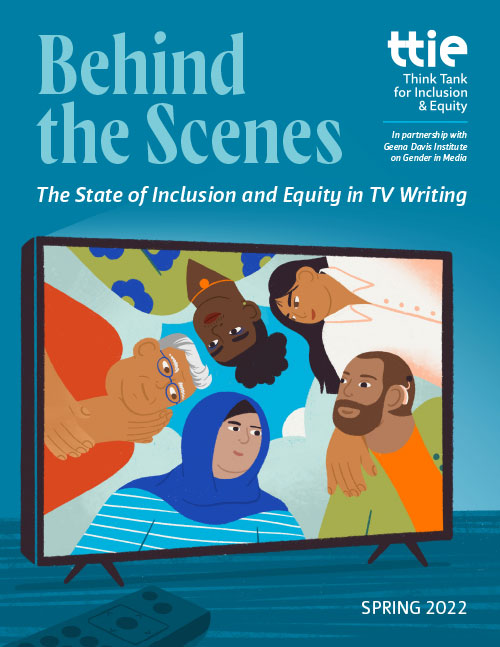
Think Tank for Inclusion and Equity (TTIE), a consortium of working television writers and a collaborative project of the organization Women in Film, is releasing its fourth annual “Behind the Scenes: The State of Inclusion & Equity in TV Writing” report, in partnership with the Geena Davis Institute. This is the only research of its kind, directly surveying working TV writers and aimed at identifying the barriers to entry and career advancement that historically excluded writers continue to face.
In its fourth year, the report addresses vital issues these writers encounter around achieving authentic, inclusive, and responsible storytelling on screen, such as equity of authorship, voice, access, and advancement. Key findings from this year’s report include:
- Seventy percent of historically excluded writers who developed new series projects in the past five years did so without pay, compared with 53% of nonmarginalized writers.
- Eighty-one percent of upper-level white writers with no prior management experience are contracted to showrun their development projects, compared with only 67% of upper-level BIPOC writers who do have management experience.
- Sixty-eight percent of white men and 56% of white women who worked as assistants secured their first TV writing job by being promoted from the assistant ranks, compared with only 26% of BIPOC men and 20% of BIPOC women who worked as assistants.
- Seventy-six percent of showrunner respondents said they received no management training prior to or during their time running a show.
- Sixty-seven percent of respondents who were harassed said their showrunner was the perpetrator.
Recommendations
- Pay historically excluded writers for development and greenlight more of their projects to series.
- Empower experienced historically excluded writers to run their own shows, especially accounting for transferable skills (e.g., prior management experience).
- Create a widely accessible training program for new and experienced showrunners and co-executive producers that includes both traditional management skills and guidance on running diverse and inclusive writers rooms.
- Institute third-party, confidential exit interviews with every writer to help identify unsafe work environments and remove bias and/or discrimination in the hiring/firing/rehiring process.
- Prioritize room-running, production, and post-production experience for writers at all levels to ensure they acquire the skills to run their own shows.
- Maintain virtual and hybrid writers’ rooms to allow for better access, especially for deaf and disabled writers and writers from low-wealth and low-income backgrounds.
Illustration: Janice Chang

